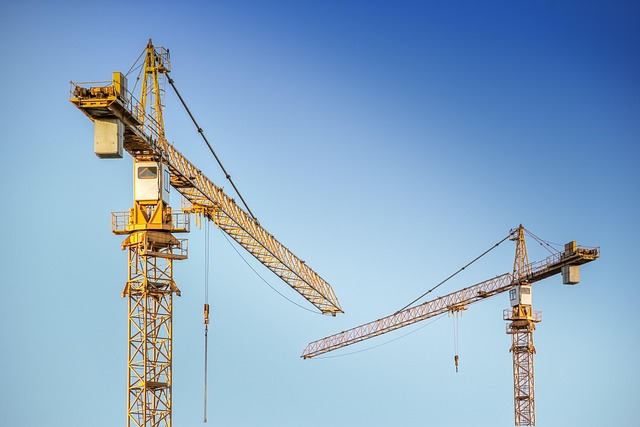Ground-Penetrating Radar (GPR) is a revolutionary technology for utility detection, offering precise, non-invasive subsurface imaging of pipes, cables, and wires. Its advantages include accurate location, identification, and mapping of underground assets, reducing damage risk during excavation in densely populated areas. GPR's versatility makes it ideal for managing diverse infrastructure across various geological settings, ensuring comprehensive maintenance. While challenges like high initial costs and specialized expertise exist, future advancements promise enhanced resolution and penetration, solidifying GPR's role in safe, efficient utility management.
Ground-penetrating radar (GPR) is transforming utility infrastructure management by offering precise subsurface imaging. This non-invasive technology penetrates the earth’s surface, creating detailed images of underground structures and anomalies. In this article, we delve into the understanding, advantages, applications, and future prospects of GPR in identifying and managing critical underground utilities. Discover how ground radar for utilities is revolutionizing safety, efficiency, and precision in infrastructure maintenance.
Understanding Ground-Penetrating Radar (GPR) Technology for Utilities
Ground-Penetrating Radar (GPR) technology has emerged as a game-changer in the field of utility detection and mapping. This innovative tool offers precise, non-invasive imaging of the subsurface, making it invaluable for various industries, particularly when it comes to managing and maintaining critical infrastructure. GPR works by transmitting high-frequency radio waves into the ground, which then bounce back after encountering different material interfaces, such as soil layers or buried utilities. By analyzing these reflections, professionals can create detailed images of what lies beneath the surface, providing a comprehensive view of underground utilities like pipes, cables, and wires.
For utility companies, GPR provides numerous benefits. It allows for accurate location, identification, and mapping of subterranean assets, reducing the risk of damage during excavation projects. This is especially crucial in densely populated areas where the potential for striking critical infrastructure during construction or maintenance work is high. With GPR, professionals can quickly and efficiently locate utilities, ensuring safe and informed decision-making processes. The technology’s ability to penetrate various materials makes it versatile, suitable for diverse geological settings and soil types, making it a reliable solution for comprehensive utility management.
Advantages of GPR in Precision Subsurface Imaging
Ground-penetrating Radar (GPR) offers several advantages in precision subsurface imaging, making it a preferred choice for various industries. One of its key strengths is the ability to provide high-resolution images of underground structures and objects with minimal disruption to the surface. This non-invasive technique sends electromagnetic waves into the ground, which bounce back after encountering different material properties, creating detailed profiles of the subsurface environment.
GPR is particularly useful for locating and mapping utilities, such as pipelines, cables, and foundations, beneath the earth’s surface. It can identify variations in soil types, detect anomalies, and even distinguish between materials like concrete, metal, and plastic. This level of detail ensures precise planning and execution of underground construction projects, reducing the risk of damaging critical infrastructure during excavation. Moreover, GPR is efficient, fast, and environmentally friendly, making it a versatile tool for various applications, including civil engineering, archaeology, and geological research.
Applications of GPR Detection in Identifying Underground Utilities
Ground-penetrating radar (GPR) detection has emerged as a powerful tool for precise subsurface imaging, offering significant applications in identifying and mapping underground utilities. This non-invasive technique utilizes electromagnetic waves to penetrate the earth’s surface, revealing the presence and location of various structures beneath. By generating detailed images of the subsurface, GPR provides crucial insights into the distribution of critical infrastructure like water pipes, gas lines, cables, and foundations.
In urban settings, where underground utilities are densely packed, GPR detection plays a pivotal role in avoiding costly damage during construction or excavation projects. Its ability to accurately pinpoint utility locations ensures safe and efficient digging operations, reducing the risk of strikes that could lead to service disruptions or even hazardous situations. This application is particularly vital for cities where aging infrastructure requires regular maintenance and upgrades while balancing the need for new developments.
Future Prospects and Limitations of GPR in Utility Infrastructure Management
The future prospects of Ground-Penetrating Radar (GPR) in utility infrastructure management look promising, with continuous advancements in technology driving its effectiveness and versatility. Enhanced resolution and deeper penetration capabilities allow GPR to image complex subsurface structures, making it invaluable for planning and maintaining critical infrastructure like pipelines, cables, and foundations. The non-invasive nature of GPR also minimizes disruption during surveys, reducing costs and facilitating regular monitoring.
However, limitations remain. High initial investment and the need for specialized expertise limit widespread adoption among smaller utilities. Environmental factors, such as high water content or dense materials, can degrade GPR signal quality. Moreover, interpreting complex data requires skilled analysts, which may be scarce in some regions. Addressing these challenges through cost-effective training programs, improved hardware design, and adaptable software algorithms will further enhance the role of GPR in utility infrastructure management, ensuring safer, more efficient operations in the future.
Ground-penetrating radar (GPR) has emerged as a powerful tool for precise subsurface imaging, offering significant advantages over traditional methods. Its ability to detect and map underground utilities effectively makes it an indispensable asset in the field of utility infrastructure management. As technology advances, GPR’s potential in this sector continues to grow, promising enhanced efficiency, cost-effectiveness, and safety. However, further research is needed to overcome limitations such as signal degradation in complex geological formations and the need for specialized interpretation techniques. With ongoing developments, GPR holds immense promise to revolutionize ground radar for utilities, ensuring safer and more efficient infrastructure maintenance in the future.
